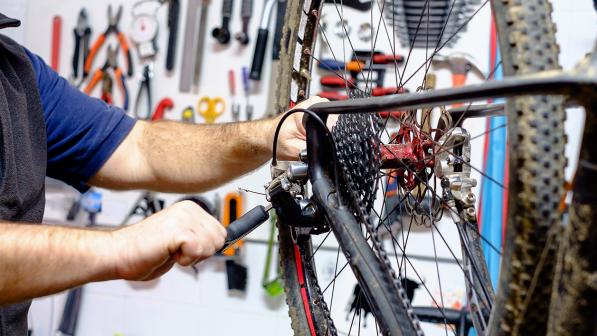Group test: Alternative bicycle handlebars

Alternative handlebars (‘alt bars’) are designed primarily for long-distance off-road riding, where comfort and capability on tricky terrain are key design factors. They’re a subset of the flat bar found on mountain bikes and hybrids, and offer a multitude of different hand positions.
A standard flat bar gives you just one, which works fine for control off road but locks you into that handhold. If you ride for any great length or time, no matter the terrain, being able to change your hand position is always welcome. That’s where alt bars excel.
These bars are often designed with bikepacking in mind. Compared to drop bars, they are more compatible with handlebar rolls and not as restrictive in terms of luggage and accessory space.
If swapping to these bars, it’s worth bearing in mind that their width may mean that you need longer cables, housings and hoses – though that’s less likely if coming from a modern mountain bike with a wider bar.
One bar missing from this test is the On-One Geoff, which is a cheaper copy of the Jones. We’ve reviewed that previously – tester Dan Joyce now has two.
1. Surly Moloko Bar
Price: £129.99
Weight: 722g
Width: 735mm
Sweep: 35°
Available from: Surly
The heavyweight contender in this review, the Moloko bar (anyone else thinking of A Clockwork Orange?) is 722g on my scales. That’s down to it being made of steel; the others are aluminium. Steel helps eliminate some off-road buzz, meaning less stress on your paws over long rides.
At 735mm wide and with a more modest sweep of 35° (10° less than the Jones), it’s another comfortable bar that gives plenty of options for hand placement. There’s guidance on where to trim the bar if you find it too wide.
The wee ‘horns’ are a nice touch if you’re trying to be aero – or need something to hold fast to when hauling yourself uphill.
Verdict: A worthy and slightly cheaper alternative to the original Jones – although also heavier.

2. Jones SG Loop H-Bar standard rise
Price: £149
Weight: 625g
Width: 710mm
Sweep: 45°
More information: Jones Bicycles
Available in the UK from: Bothy Bikes
Arguably the bar that launched a thousand (well, quite a few) variations, there’s a reason why the Jones bar is so popular: it’s incredibly comfortable.
Uncut at 710mm and weighing 625g, it can seem monstrous initially. Its length, 45° sweep and loop give multiple hand positions, providing comfort on all terrain, and allowing for a more upright or aggressive position as you see fit.
The loop also gives plenty of room for lights, bells and other equipment, and provides a stable platform for fixing luggage. It’s hard to fault the original alt bar, but the price may make some hesitate.
Verdict: Incredibly versatile and rightly loved, but very expensive.

3. Alpkit Sonder Confucius
Price: £34.99
Weight: 481g
Width: 760mm
Sweep: 15°
Available from: Alpkit
If you’re alt-bar curious the wallet-friendly Confucius could be for you. The bar has minimal rise and sweep (15°). The minimalist theme continues as it’s also the lightest bar at 481g – despite being the second widest at 760mm.
Modern mountain bikers will find the width and sweep familiar, with the smaller loop (in comparison to the Jones and Surly bars) also providing enough hand positions to prevent fatigue as well as space for gadgets.
I found the lack of sweep meant these bars suited technical rather than longer rides, while the smaller loop was less convenient for lashing luggage to than the others reviewed here.
Verdict: Best on test for shorter, technical bikepacking trips. Very affordable.

4. Velo Orange Crazy Bars v2
Price: £109
Weight: 539g
Width: 780mm
Sweep: 35°
More information: Velo Orange
Available in UK from: Velo Duo
The original Crazy Bars had no rise, which was changed to a 40mm rise for the v2 on test.
The name is highly appropriate, as even if accustomed to alt bars the width (780mm) of this one is a bit bonkers. This width can make train travel difficult in the UK (even more so than other alt bars), and you’ll need to dial back your woodland and city riding until you get used to it.
Despite the width, it’s a modest 539g on the scales. Like the Moloko bar it has a 35° sweep, which gives a more relaxed, upright feel to the ride – although if you drop onto the ‘horns’ you can adopt are more wind-cheating posture.
Verdict: Great for plains and moors. Maybe steer clear of forest singletrack!

Overall verdict
All these bars are bikepacking capable. Alpkit’s Confucius is an affordable entry point into alt bars. For those who ride hard and light it’s a great option, although it’s not as comfortable for long-distance riding as the others.
Velo Orange’s Crazy Bar is the outlier in design, but despite the impracticalities it creates in terms of transport and tight singletrack, the confidence it lends to your ride is worth considering if you’re not a fan of the loop.
Jones and Surly both raise the bar (pun intended) in terms of luggage-carrying capabilities, extra equipment placement and overall comfort. Between the two, the Surly Moloko’s lower price, steel tubing and ‘hornlets’ carry the day for me.
First published in Cycle magazine, June/July 2024 issue. All information correct at time of publishing.
Cycle magazine
Every two months Cycling UK members receive Cycle magazine, filled with interesting and informative articles, news and reviews for all cyclists.
Members can read the magazine in full online; non-members can read selected highlights.


